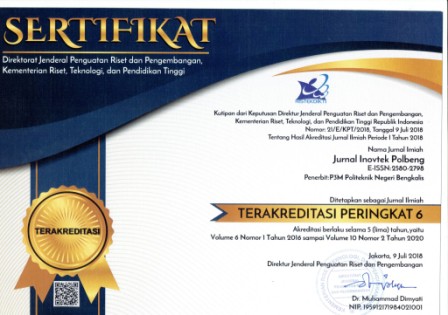Strategi Optimalisasi Pemilihan Propeller B-Series untuk Kapal: Studi Kasus Kapal Tanker
Abstract
Pemilihan propeler merupakan proses yang penting karena mempengaruhi titik operasi mesin yang perepresentasikan kecepatan kapalhingga konsumsi bahan bakar. Diantara beberapa tipe propeller, B-Series Propeller merupakan seri propeller yang umum digunakan di kapal, karena B-Series propeller memiliki database yang cukup lengkap dan bervariasi, mulai dua hingga tujuh daun propeller. Dalam penelitian ini, program komputer berbasis pemrograman numerik dikembangkan untuk menentukan propeller B-Series yang paling optimum untuk kapal. Tujuan dari penelitian ini adalah untuk mempermudah proses desain awal propeller di kapal, sehingga pekerjaan desainer kapal lebih cepat dan efektif dalam mendapatkan propeller yang optimum dengan memperhatikan batasan – batasan seperti diameter maksimum propeller, kavitasi, gaya dorong propeller, dan koreksi bilangan Reynold. Dengan banyaknya objektif dalam proses pemilihan propeller, maka satu objektif utama dipilih dan objektif lainnya dijadikan variabel batasan dalam penelitian ini. Berdasarkan hasil dari simulasi yang telah dilakukan telah sesuai dengan teori kinerja propeller yang menyatakan bahwa jumlah daun propeller yang lebih kecil memiliki efisiensi yang lebih bagus dibandingkan dengan propeller dengan jumlah daun propeller lebih banyak.
Keywords
Full Text:
PDFReferences
D. Rutherford and B. Comer, ‘The International Maritime Organization’s initial greenhouse gas strategy’. 2018. [Online]. Available: https://trid.trb.org/view/1509482
M. A. Budiyanto, A. Adha, and P. H. N. Prayoga, ‘Distribution of energy efficiency design index for tankers in Indonesia’, 5th Int. Conf. Renew. Energy Environ. Eng., 2022, doi: https://doi.org/10.1016/j.egyr.2022.10.089.
Roberto Vettor, Mina Tadros, Manuel Ventura, and Carlos Guedes Soares, ‘Influence of main engine control strategies on fuel consumption and emissions’, Taylor Francis Group, 2018, doi: 10.1201/9780429505294-19.
J. Carlton, Marine Propellers and Propulsion. UK: Butterworth-Heinemann: Oxford, 2007.
M. Tadros, M. Ventura, and C. G. Soares, ‘Design of Propeller Series Optimizing Fuel Consumption and Propeller Efï¬ciency’, J. Mar. Sci. Eng., 2021, doi: doi.org/10.3390/jmse9111226.
C. Kusuma, I. M. Ariana, W. H. Nugroho, M. Indiaryanto, and aharudin Ali, ‘Development of Optimum Design B-Series Propeller with Engine Propeller Matching, A Case Study 60-Meters Patrol Boat’, Int. J. Mar. Eng. Innov. Res., vol. 7, Jun. 2022.
M.M. Ghafary, H.S. El-Kilani, and M.M. Moustafa, ‘Optimum design of B-series marine propellers’, Alex. Eng. J., 2011.
Aulia Windyandari, G. D. Haryadi, Suharto, and A. F. Zakki, ‘Optimization Procedure to Determine the Optimum Propeller of Traditional Purse Seine Boat’, Int. J. Mech. Eng. Technol. IJMET, vol. 9, no. 13, 2018.
M. Tadros, M. Ventura, and C. G. Soares, ‘Optimum design of a container ship’s propeller from Wageningen B-series at the minimum BSFC’, Sustain. Dev. Innov. Mar. Technol. - Taylor Francis Group, 2020.
Bernitsas M.M., Ray D, and Kinley P., ‘KT, KQ and Efficiency Curve’. 1981.
Anthony F. Molland, Stephen R. Turnock, and Dominic A. Hudson, Ship Resistance and Propulsion: Practical Estimation of Ship Propulsive Power, 2nd ed. UK: Cambridge Univversity Press, 2017. [Online]. Available: www.cambridge.org/9781107142060
Anirban Bhattacharya, ‘Lecture 25: Propeller Cavitation(Part-II)’, Indian Institute of Technology Kharagpur, 2022.
DOI: https://doi.org/10.35314/ip.v13i2.3737
Refbacks
- There are currently no refbacks.
Copyright (c) 2023 INOVTEK POLBENG
This Journal has been listed and indexed in :

inovtek polbeng by http://ejournal.polbeng.ac.id/index.php/IP is licensed under a Creative Commons Attribution-ShareAlike 4.0 International License









